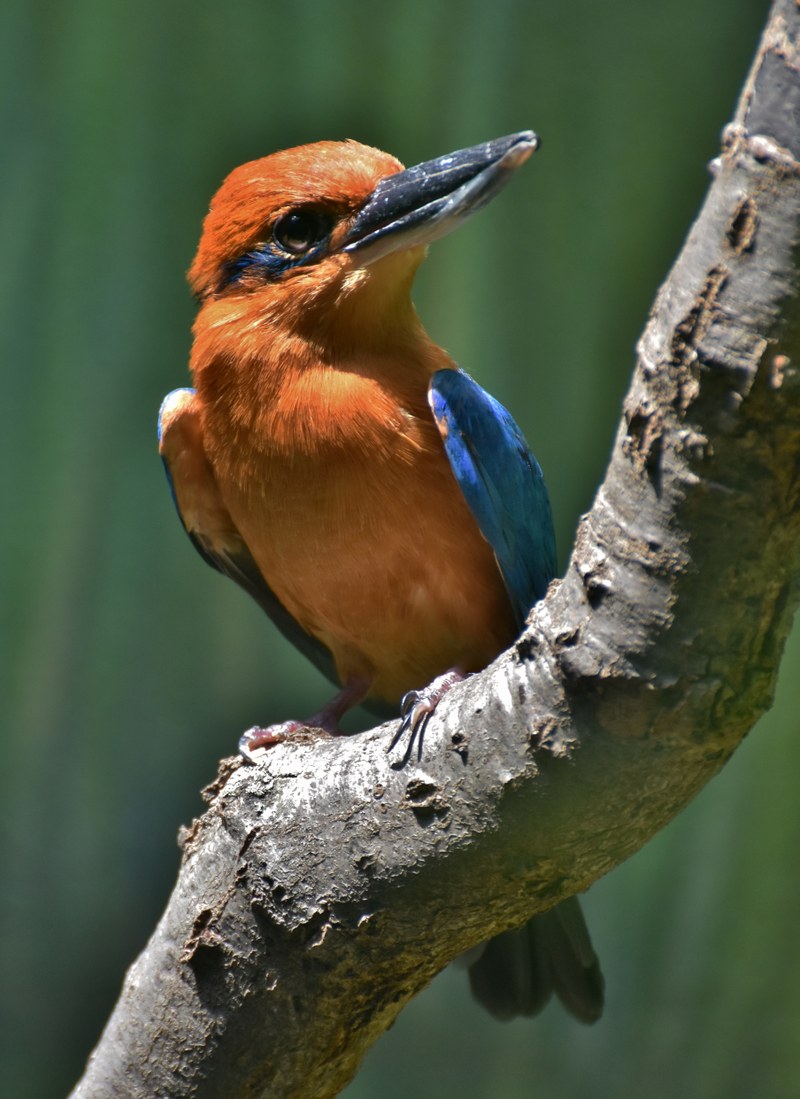
Birds of the Islands
Learn More About the Zoo’s Newest Exhibit.
Aug. 6, 2020 - Birds of the world’s islands are barely holding on for their life. While only 10 percent of the globe’s feathered species live on islands, they represent about half of all threatened birds in the world, according to the International Union for Conservation of Nature.
That’s why the ABQ BioPark wanted to dedicate a new exhibit exclusively to island birds to talk about their plight and what’s being done to give these birds a helping hand.
The Birds of the Islands exhibit will be viewable for the first time ever as the Zoo reopens its doors on August 7 to members and August 12 to non-members. Visitors can view and learn more about endangered island birds from around the world including the superb starling, Bali myna, Cuban Amazon parrot, Guam kingfisher, Major Mitchell’s cockatoo, Nicobar pigeon, Socorro dove, Australian king parrot, red lory and wrinkled hornbill.
Visitors will also learn more about what the ABQ BioPark is doing to help a few of these birds. The Zoo has breeding programs for the Socorro dove and the Guam kingfisher, both of which are extinct in the wild and only exist in captivity. One day, conservationists hope to start releasing both species into their wild habitats. In the meantime, breeding programs like those at the ABQ BioPark are critical.
Meet the Stars
Princess of Wales Parakeet
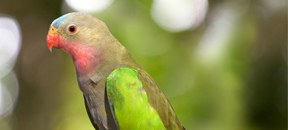
This species is one of Australia's least known parrots because it is so elusive. Nomadic, the birds arrive in small groups to breed and then disappear.
Australian King Parrot
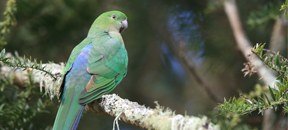
Although king parrots look red and green to the naked eye, when viewed under ultraviolet light, some of their wing feathers appear to have a prominent yellow glow.
Red Lory
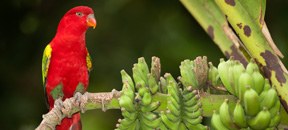
These birds play a major role in pollinating trees and flowering plants.
Major Mitchell’s Cockatoo
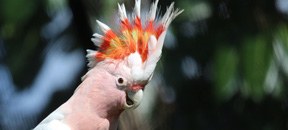
Both parents incubate the eggs for a month and take turns feeding the young, who leave the nest at 6-8 weeks.
Superb Starling
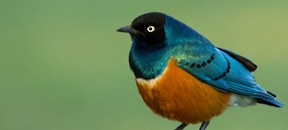
These birds raise the young as a team. Most breeding pairs have helpers—mostly young males from previous hatchings—who contribute nesting material and feed the young.
Bali Myna
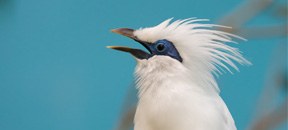
Once a pair mates they bond for life. They strengthen their bond through mutual preening and displaying.
Wrinkled Hornbill
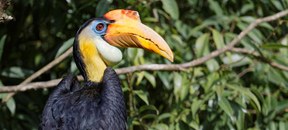
Females make nests in large tree cavities using mud and droppings. A small slit provides air circulation and a passageway for food passed through from the outside from her mate.
Guam Kingfisher
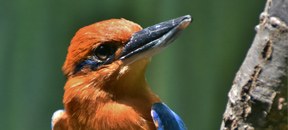
This species became extinct in the wild in 1988 due to the predatory brown tree snake, which was introduced to Guam during World War II.
Cuban Amazon Parrot
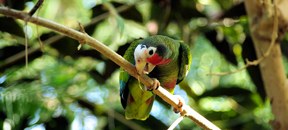
Cuban Amazons are found on different islands in the Caribbean, including Cuba and the Cayman Islands.
Nicobar Pigeon
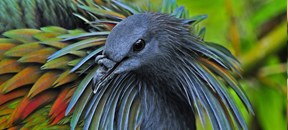
Nicobar pigeons are hunted for food, the pet trade and also for their gizzard stone, which is used in jewelry.
Socorro Dove
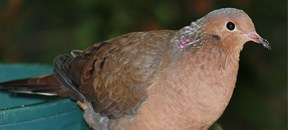
The Socorro dove became extinct in the wild in 1972 and the ABQ BioPark participates in an active breeding program designed to ensure long-term survival of the species.
Visit us to Learn More
Learn more about these birds when you visit them at the Birds of the Islands exhibit, located on the Tropical Trail. Each bird habitat has information about diet, habitat and fun facts. The Socorro dove and Guam kingfisher habitats have additional information with background on conservation for these species.
